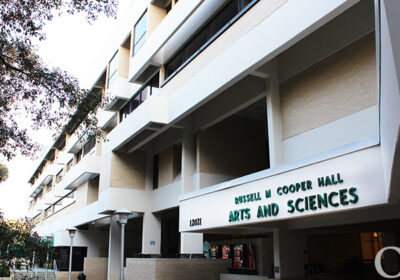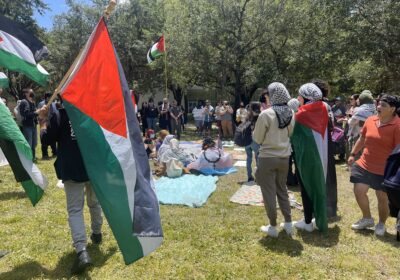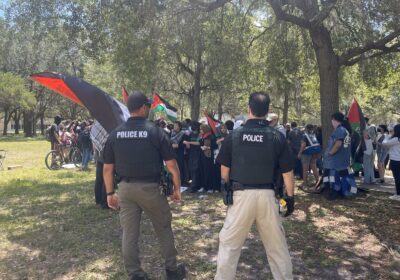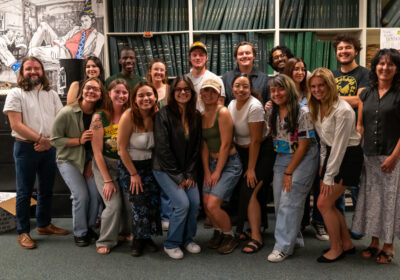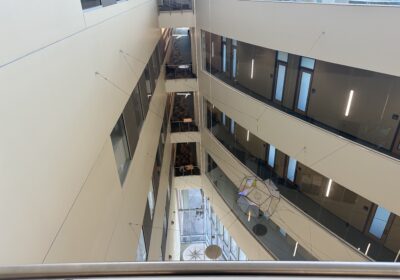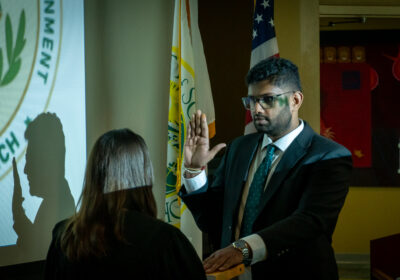Law creates advisory committee to assess development of USF Forest Preserve, The Claw
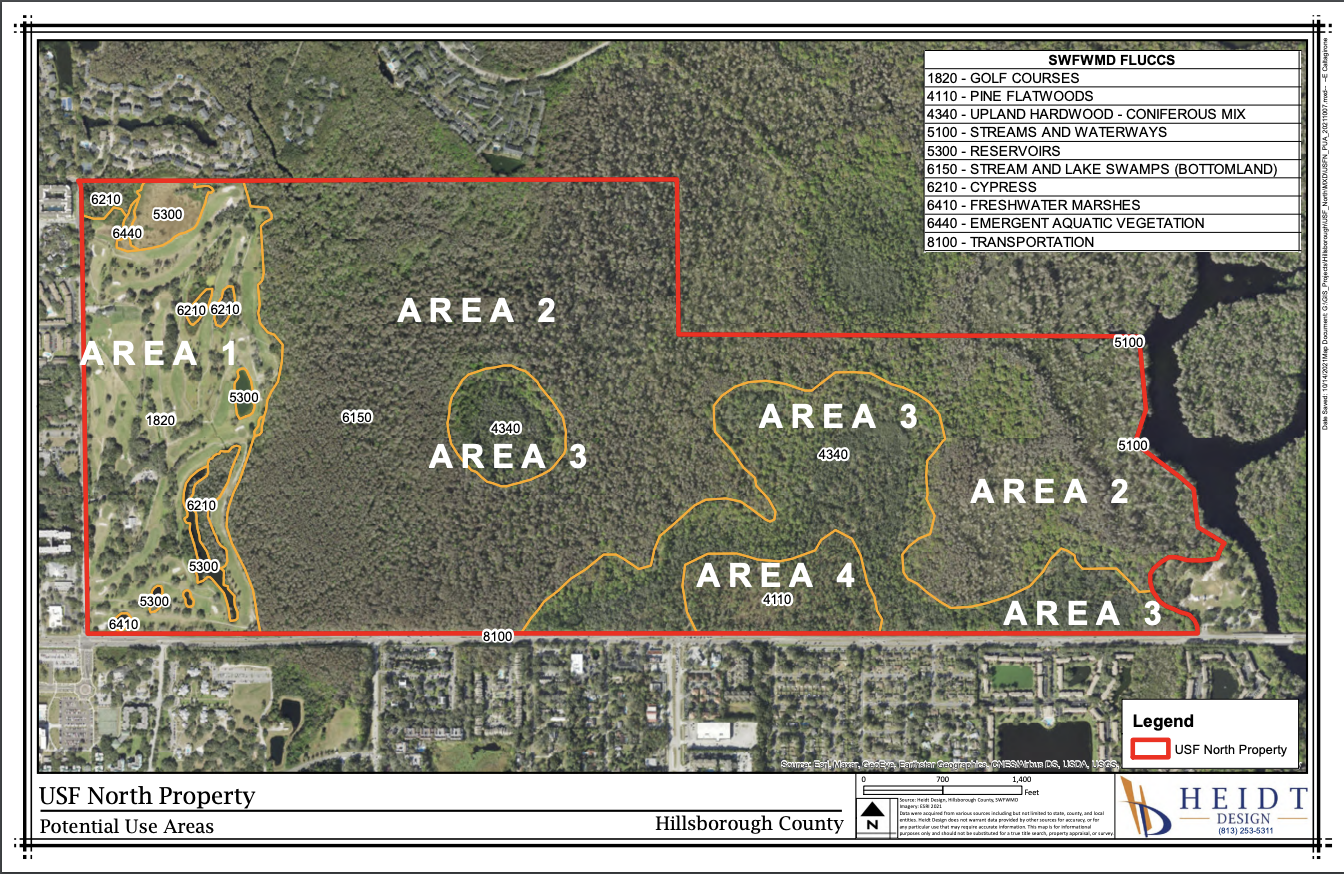
USF Interim President Rhea Law formed the North Fletcher Property Advisory Committee on Tuesday to review an Ecological Assessment Report and provide recommendations for the future of the property, including the USF Forest Preserve.
The report, prepared by civil engineering firm Heidt Design, identified the ecological and physical conditions of the North Fletcher Property, according to the email. It also summarizes potential uses of the property based on the conditions.
The 769-acre property was divided into four sections in the report. Area 1 is made up of the USF golf course The Claw, Area 2 is the riverine forest and Areas 3 and 4 are the forested upland habitat.
The report stated that Area 1 would be the most likely to be developed since it would pose the least amount of ecological constraints. Areas 2,3 and 4 are made up of wetlands and uplands, making them more desirable for conservation or educational and research use, according to the report.
Community concerns around the preservation of the areas and existing habitats on the property were raised in April when USF submitted a Request for Information (RFI) to gather information from outside developers for potential projects in the area.
With the RFI, the university wanted to gauge interest and learn about potential developments that could provide financial resources to support its mission, according to Assistant Vice President of Communications and Public Relations Adam Freeman.
To gather input about potential projects, the committee will conduct public meetings and submit its recommendations for uses of the property in 45 days.
“The scope of the advisory committee will focus on the benefits of such recommendations to both the university and surrounding Tampa communities,” the email said.
Composed of 13 members, the committee includes Dean of the College of Marine Science Tom Frazer, Senior Associate General Counsel Hilary Black, Student Body President Julia Cunningham and Dean of the College of Arts and Sciences Eric Eisenberg.
Members also include Director of Water Sustainability Kebreab Ghebremichael, College of Arts and Sciences professors Jody Harwood and Mark Rains, Director of USF Water Institute Shawn Landry, College of Arts and Sciences associate professors David Lewis and Luanna Prevost, Department of Integrative Biology doctoral candidate Jeannie Mounger, biomedical sciences major Amy Pham and Interim Senior Vice President for Finance Rich Sobieray.
Recommendations for potential use of the property will focus on minimizing environmental impacts by considering options for mitigation, protecting wildlife and preserving nature, according to the email. Culturally significant areas of the property, including land with connections to Indigenous peoples, are legally protected, the email said, and will be respected in any plans.
Freeman said in April that since the USF Forest Preserve is designated as federal wetlands, any proposal submitted to the university would have to abide by existing restrictions focused on preservation.
“Proposals received by the university must consider options for mitigation, protecting wildlife and preserving unique natural features of the property in order to minimize any environmental impacts,” he said.
“Any potential project would have to fall within existing restrictions for the development of the property pursuant to USF’s master plan, City of Tampa codes and ordinances and the requirements of other agencies.”
No decisions have been made about the future of the property as of yet, but Area 1 is most likely to undergo conventional development such as for residential, commercial or retail use, according to the report.
There are little to no undisturbed wetlands and uplands in Area 1, the report said. They are either nonexistent or small and scattered. Wetlands have been filled, excavated or drained, and the uplands have been cleared, developed or maintained, according to the report, making the ecological constraints low if developed.
Extending from the east edge of the golf course to Riverfront Park, Area 2’s ecological conditions makes it a difficult location to develop due to possible scrutiny of any impacts proposed to the habitat, according to the report.
Area 2 is not a good location for conventional development, the report said, but the area could be purchased as conservation lands by the County’s Environmental Lands Acquisition and Preservation Program or a state conservation lands acquisition.
“While the ecological and physical conditions in Area 2 may make development potential difficult, these same conditions could make the area desirable for use as a wetland mitigation bank or for a conservation lands purchase,” the report said.
Development of Areas 3 and 4, the forested upland habitat located east of Area 2 along Fletcher Avenue, would likely be accompanied with the requirement of relocating gopher tortoises, but the report said the areas could also be used for educational, research, conservation and mitigation purposes due to their ecological conditions and proximal location.
“As Areas 3 and 4 are upland areas abutting a major roadway corridor, it is likely that typical development could be entitled on the parcels for uses that would be compatible with the surrounding areas,” the report said.
Law listened to community concerns about the importance of the North Fletcher Property, and with her prior experience as an environment and land use attorney, she acknowledged it is a complex matter to students, faculty and staff.
“In her charge to the committee, she noted that through her experience she has gained a deep understanding of the complexities involved in matters similar to the North Fletcher Property,” the email said.
“She recognizes the significance of carefully assessing ecological conditions and regulations, along with opportunities associated with the property.”
Additional reporting by Angela Cordoba Perez, news editor.


